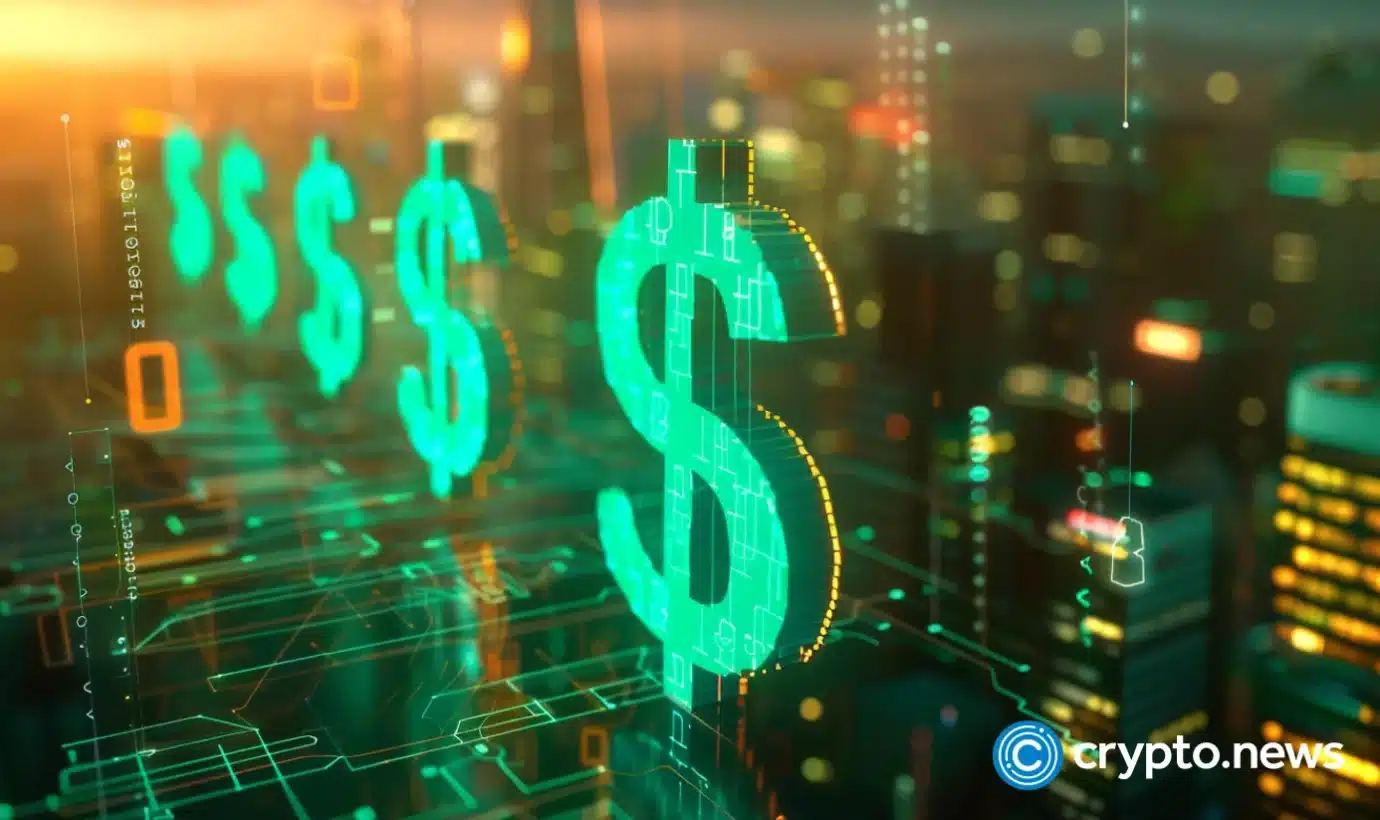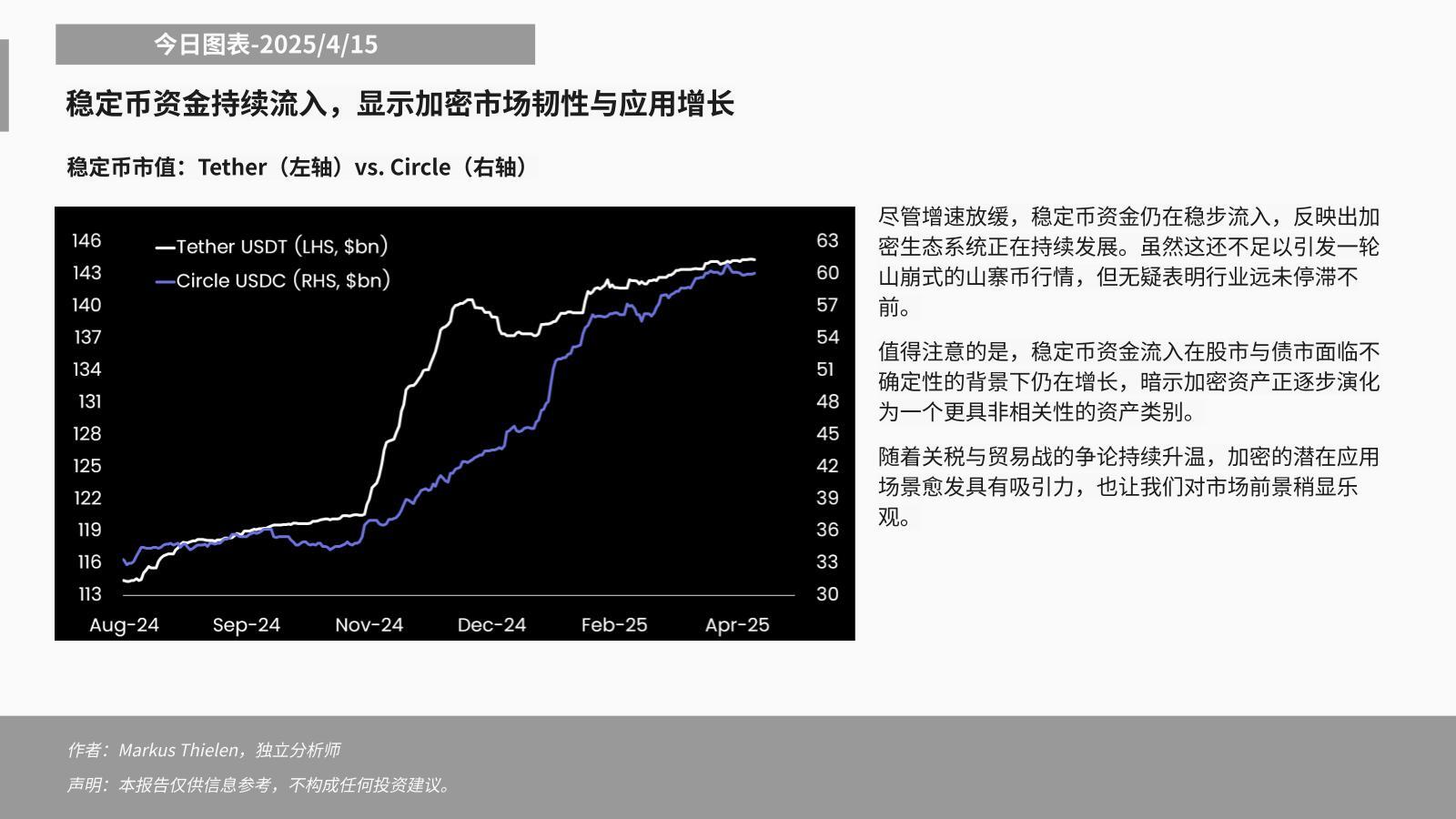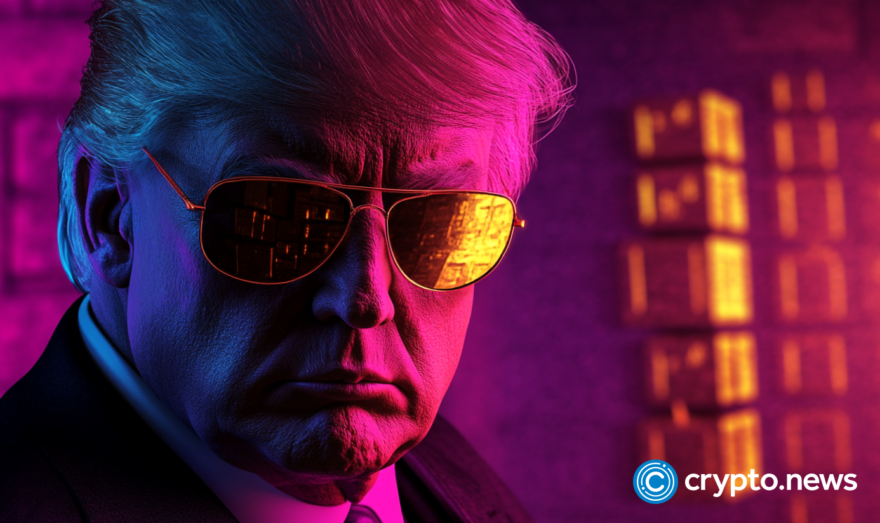Stablecoin inflows persist amid macro uncertainty: Matrixport

Despite ongoing macroeconomic uncertainty and regulatory challenges, the market caps of the two leading stablecoins USDT and USDS has seen substantial growth over the past eight months.
Despite the current volatility in the crypto market, fueled by macroeconomic uncertainty induced by the ongoing trade war, capital continues to flow into the ecosystem through stablecoins. A chart released by Matrixport on April 15 highlights sustained growth in the market caps of the two biggest stablecoins Tether (USDT) and Circle’s USD Coin (USDC) over the past eight months. This suggests that liquidity keeps flowing into crypto even though digital assets’ prices have bled considerably over the past few months.
From August last year to April, USDT’s market cap surged from approximately $113 billion to over $143 billion, marking a 26% increase. This growth has persisted despite Tether facing partial delistings across some European platforms due to non-compliance with the MiCA regulations, which require tighter disclosure and asset backing standards. As for USDC, it has increased from just over $31 billion to roughly $60 billion, marking an 93% increase.
Matrixport analysts interpret these inflows as a sign that stablecoins are becoming increasingly embedded in the digital economy, even without a parallel bull run in crypto assets themselves.

The continued inflow of stablecoins occurs against a complex regulatory backdrop in the United States. Just last week, the Securities and Exchange Commission clarified that so-called “Covered Stablecoins” — fiat-backed, fully redeemable assets like USDT and USDC — do not fall under its jurisdiction as securities, offering some relief to issuers.
However, this stance remains in contrast with legislative proposals like the STABLE Act, which seeks to impose bank-like regulatory requirements on all stablecoin issuers, and the more innovation-friendly GENIUS Act, which proposes a federal charter system to regulate stablecoins without stifling private-sector innovation.
















